Last updated on August 11, 2025 · Comprehensive breakdown, <10 min read

Trying to figure out how to write a blog for affiliate marketing? Follow these 13 actionable steps and you’ll be well on your way to getting targeted traffic to your content and consistent monthly revenue in no time.
How To Write a Blog For Affiliate Marketing
First, choose a niche based on your actual interests. Next, create consistent, high-quality content that answers your target audience’s searches. Practice good SEO & keyword research, deliver value, and you’ll be ranking and driving targeted traffic that converts.
Knowing how to write a blog for affiliate marketing isn’t about being a professional writer. It’s all about delivering value consistently to your audience. Let’s check out 13 actionable steps you can take to start from scratch and make your blog a great one.
1. It All Starts With a Niche
Your blog can’t just be a stream of consciousness about anything and everything. You need to be laser focused with your direction!
- What’s Your Passion?: Writing about topics you’re genuinely interested in instantly places you smack dab in the middle of your own target audience. This makes you relatable and makes creating content more manageable and enjoyable.
- Avoid Chasing “Untapped” Niches: Focus on niches you’re passionate about. Don’t try to search far and wide for the untapped market no one’s gone for yet. Guess what, there are none!
- Profitability in Any Niche: Any niche, from travel photography to chess, can be profitable in affiliate marketing when approached correctly. Go with what you love and the process is much, much easier to stick with.
2. Build Your Website (It’s Much Easier Than You Think)
Never built a website? No problem. Neither had I.
- Website Building is Simple: Building a website isn’t as difficult as many think; the process is much more straightforward and doesn’t require extensive technical knowledge. I build all my websites with Wealthy Affiliate.
- No Need for Coding Skills: Don’t know coding? No problem. Website builders like Elementor use an easy drag and drop system allowing for crazy customization.
- Where You Host Matters: When choosing where you host your website, don’t just go for the cheapest one you find, but also make sure you don’t overspend. Make sure you go with a hosting platform that offers security, support, and plenty of features while still being affordable. Wealthy Affiliate’s hosting is top notch.
Get started on the right foot!
Check out my article on choosing the right blogging platform and set yourself up for success!
3. You Gotta Master that Keyword Research
Honestly, this is the absolute key to getting traffic to your blog. If you don’t do this one step, none of the rest matter. No matter how great your niche is or how beautiful your website is, if your audience isn’t finding your blog, what’s the point?
- Understanding Keywords: Keywords are the actual words people type into the search engines. Keyword research is about analyzing these words and phrases to determine their traffic potential for your site.
- The Power of Keyword Research: Knowing the exact searches your audience is making is like knowing exactly what every customer walking into your store wants. When you know what they’re looking for, you can create content that is the ANSWER to those searches.
- Keyword Research Tools: Tools like Jaaxy are designed to not only gather search data, but help you identify the searches with the least competition as well.
- Knowing Where to Place Your Focus Keyword: Understanding good SEO practices means knowing exactly where to place keywords so that Google and the other search engines will correctly pull up your content when the search is made by your audience. This means placing your focus keyword in your post’s URL, title, and first paragraph
- Avoid Keyword Stuffing: Overusing keywords can lead Google to categorize your content as spam. So don’t go placing your focus keyword everywhere, just let your content naturally flow.
4. Directly Answer Your Audience’s Question
Now that you know exactly what your audience is looking for, it’s time to be the answer to their searches! Be direct with your content and bring the value. If it’s an informational post, be thorough. If it’s a product or service they’re searching for, review it honestly (see point #8).
This is absolutely critical to building your authority and trust while always improving your website’s user experience. This leaves your audience satisfied and coming back for more.
Related article: Check out my 10 step guide on how to start a successful blog here!
5. Are You Targeting “Low Hanging Fruit” Keywords?
Keyword research is key, but do you know how to let the keyword research tool’s data lead you to the right types of keywords you should be targeting?
- Avoiding Highly Competitive Keywords: Targeting extremely popular keywords will lead to your content getting lost in the back pages of search results. These keywords are always locked down by high authority websites you won’t be able to outrank.
- Choosing Low Competition Keywords: Opting for less competitive keywords, often referred to as “low hanging fruit,” can significantly increase your chances of ranking at the top of the search results.
- 100/100 & 50/50 rule: When using a keyword research tool, an easy rule of thumb to find your low hanging fruit keywords is the 100/100 rule. Find keywords with traffic greater than 100, while having competition less than 100. Want to go even tighter with your keyword choice? Go after keywords with greater than 50 traffic and less than 50 competition.
Want to see a great keyword research tool like Jaaxy in action? Check out this training tutorial from Wealthy Affiliate:
6. Don’t “Tell” or “Sell” Your Audience, Show Them!
This point piggybacks on point #4 of directly answering your audience’s questions. When your reader feels that they are actually being helped and you’re delivering value consistently, they will return over and over again.
- Avoid Click-Bait Titles: Never use misleading or sensationalized titles. Your readers will NEVER COME BACK if you lure them in with something and don’t actually deliver the goods! Never use click-bait!
- Focus on Providing Genuine Answers: Always make sure your posts sincerely address the topic at hand. Your content should aim to genuinely help and inform your readers, rather than just selling to them. If your blog post title is all about how to embed YouTube videos into your content, MAKE SURE YOU ACTUALLY SHOW THEM HOW TO DO IT!
- Be Conversational and Thorough: In my experience, using a conversational tone in your writing helps you connect with your audience. Be thorough, fully explain your points, and using easy to understand examples wherever possible.
- Walk a Mile in Their Shoes: Always consider your content from your readers’ perspective. Ask yourself:
- “Does this post thoroughly answer my audience’s questions?”
- “Do the points in this post make sense and have a good flow to them?”
- Would a video help explain this question much more clearly?”
7. Don’t Be a Robot! Share Who You Are!
So many times I see affiliate marketers forgetting about the PERSONAL aspect of this lucrative industry. Share who you are and what you’re about! You can multiply your profits by 10 times or more by simply establishing a real connection with your reader.
- Show Your Authentic Self: Letting your true voice and passion shine through in your content to your readers builds a stronger connection. This leads to repeat visits and more engagement.
- Don’t Sleep on Your “About Me” Page: Instead of discussing your background in every post, have a dedicated “About Me” page on your website. Make iteasily accessible by placing it in your main menu, and let your readers see you as a real person instead of just words on a screen.
- Get Personal: Your “About Me” page should include your photo, share your story, and highlight your background. This approach helps readers see you as relatable and trustworthy.
- Encourage Relatability: Let your audience recognize that your perspectives and experiences resonate with their own. This relatability can increase loyalty and trust in your content.
8. Honesty is Always the Best Policy
No matter how much you share about yourself, the second you become dishonest with your audience you will lose them forever! This means being honest with your reviews and not saying a product or service is “GREAT!” just because you’ll get a commission from that sale.
- Transparency with Affiliate Marketing: It’s important to be transparent about earning commissions from promoted products or services. Ensure your website has a clear and easily noticeable affiliate disclosure.
- Never Chase Commissions: Don’t promote a product or service that you wouldn’t use yourself. NEVER push a product or service just to get a big commission! Do this and your audience will never return. It’s affiliate marketing suicide! Don’t do it!
- Authenticity in Sharing Success Stories: While sharing your success stories, avoid exaggeration. Authenticity and honesty in your content will significantly build your credibility and audience trust.
- Value of Complete Transparency: Being completely transparent in your posts will lead to your success. This approach makes you stand out from the rest in the crowded online space.
9. Use Attention Grabbing Titles & Headlines
Do your keyword research right and you’ll be getting ranked on page 1 of the Google search results. But remember, this doesn’t guarantee your article is going to get clicked on. You need to grab your readers’ attention!
Make sure your titles grab the attention of your audience so they won’t be able to resist clicking on them! And don’t stop just with your titles, make sure your headlines within your blog are clearly visible, and easy to read.
In this day and age of the internet, your readers have very short attention spans. When they arrive at your article they will actually start scanning your article rather than reading it from the top down. In fact, the average reader only read about 14% of the words on the page!
Take the following 2 sample titles:
- “My Meat Free Burger Recipe”
- “Slap Your Mama Meat Free Burgers – Vegan in One Bite!”
Which one would you click on? See what I mean?
10. Don’t greet your readers with a wall of text
You don’t want to read this. You don’t want to read one word of this just from the look of the paragraph. It’s a massive wall of unattractive, hard to read text. This paragraph is an instant back-button-pressing-get-me-out-of-this-website-post-wrecker. Right now you’re thinking to yourself, “Is he really going to make me read through all this copy to get his point across? Ok. We get it. This wall of text is horrible. Make it stop. Please make it stop. Wait, maybe I should read through this just in case there’s something hidden in the wall of text. Would he do that just to make a point? No. He’s not. He knows that I’m thinking that and he’s using it against me. Well now I’m so far in I might as well finish it all out. It’s too late for me. Tell my family I loved them. When I woke up this morning I had no idea this would be the end of me. No more sunny skies. No more birds chirping. Say goodbye to all aspirations of traveling the world. It’s just this never-ending wall of text for the rest of my days. What a cruel, cruel way to go.
That was just painful, wasn’t it?
Please never do that to your readers.
- Web Reading vs. Book Reading: Reading text on a website is totally different than reading from a book. Websites need plenty of white space and well-spaced visuals for easier scanning. Let your content breathe!
- Short Paragraphs: Keep your paragraphs concise, ideally 3-4 sentences long, to facilitate easy scanning and better readability on web pages.
- Visual Enhancement: Incorporate relevant graphics strategically throughout your content. This visual appeal enhances the user experience. Just don’t overdo it! Less is more.
- Image Optimization: Ensure your images are optimized for fast page loading. This not only improves user experience but also benefits SEO.
11. Monetize Your Blog with Relevant Affiliate Programs
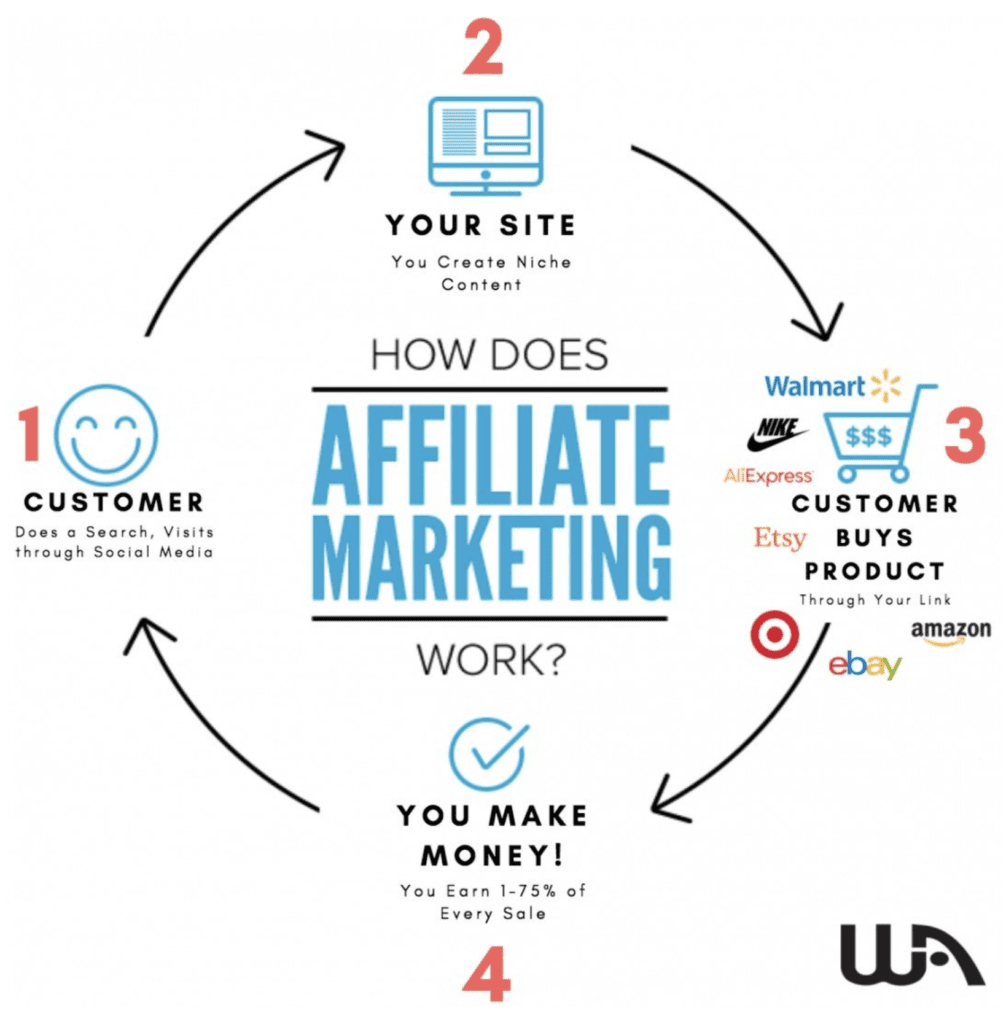
Here’s the MONEY part! It’s not about just randomly posting content to a blog and throwing in a few affiliate links and sitting back and watching cash flow in. You need to think about your audience’s needs first and then the rest will fall into place.
- Attract Your Target Audience First: Focus on creating a blog that first attracts your target audience before considering monetization through affiliate marketing.
- Easy Partnership with Merchants: Partnering with merchants for their affiliate programs is straightforward and often free. For example, Amazon readily accepts affiliates regardless of their website traffic volume.
- Commission Rates: Typical commission rates offered by affiliate programs range from 1% to 10% per sale. Even lower commission percentages can result in solid earnings considering the volume of targeted traffic your site can attract.
- Mixing High Commission Programs: Incorporate affiliate programs that offer higher commissions to boost your earnings. For instance, Wealthy Affiliate’s affiliate program offers nearly 50% commission, significantly higher than the average rate.
Related Article at WorkFromYourLaptop.com!
Check out “How Does Wealthy Affiliate Pay You?” and see my own personal results from Wealthy Affiliate’s lucrative affiliate program!
12. Make Your Content Sexy and Post Often!
When you take the time to focus on a great user experience for your readers, your content becomes SEXY. It has relevance, it is visually stimulating, the information flows, and your readers find the answers they are searching for. This translates to repeat visitors who come back for more and more!
- Keep It Fresh: Regularly updating your blog with new content lets your readers know there’s always something to come back for.
- Conversational Writing Style: Approach your content as if you’re talking to a friend. This makes your writing more relatable and engaging, even if you don’t consider yourself a “natural” writer.
- Be Honest and Direct: Focus on providing direct answers and valuable insights in your posts, rather than just guiding readers to other sources.
- Frequent Posting Schedule: Writing frequency is huge! Aim to publish 2-3 posts per week. Consistently adding new articles (potentially 100-150 per year) will build your website’s authority and draw consistent traffic, which is favored by search engines like Google.
13. Keep the Engagement Going in the Comments!
Google loves engagement! When your articles are bringing in steady comments, the search engines see this as proof and confirmation that readers are finding what they’re looking for and asking for more. This is a GREAT WAY to get your posts ranking!
How do you drive up that engagement? Just ask for it! At the conclusion of your article make sure to always direct them to ask questions and share their experience. And when they do, make sure you ALWAYS reply back!
Ready to stop chasing advice and build something that works?
I owe all my success to this training. Trust me, it’s worth taking a look.
🎯 Click here to check out my full review.
Final Thoughts
Bloggers who are successful don’t just get lucky with articles that somehow go viral. It takes consistency and work. Follow these 13 actionable steps and watch your blog traffic grow and the revenue will grow with it!
What do you think? How do you feel about these 13 actionable steps? How quickly will you be able to implement some or all of these steps into your own blog? Are there any steps you’d like to see added? Removed? Let me know what you think! I always reply, and I look forward to reading about your experiences! [cough, step 13 in action, cough]
Frequently Asked Questions
How do I choose the right niche for my affiliate marketing blog?
Start with your passions. Choosing a niche based on your genuine interests helps you create engaging, authentic content. From there, evaluate profitability and demand to ensure long-term potential.
What are the most important steps to launch a successful affiliate marketing blog?
Focus on five key steps: select a passion-driven niche, build your site with a user-friendly platform, perform targeted keyword research, create valuable content, and engage with your audience regularly to build trust and authority.
How often should I post on my affiliate marketing blog for the best SEO results?
Posting 2–3 times per week is ideal. This level of consistency helps build momentum with search engines, expands your content library, and keeps your audience engaged with fresh, helpful content.
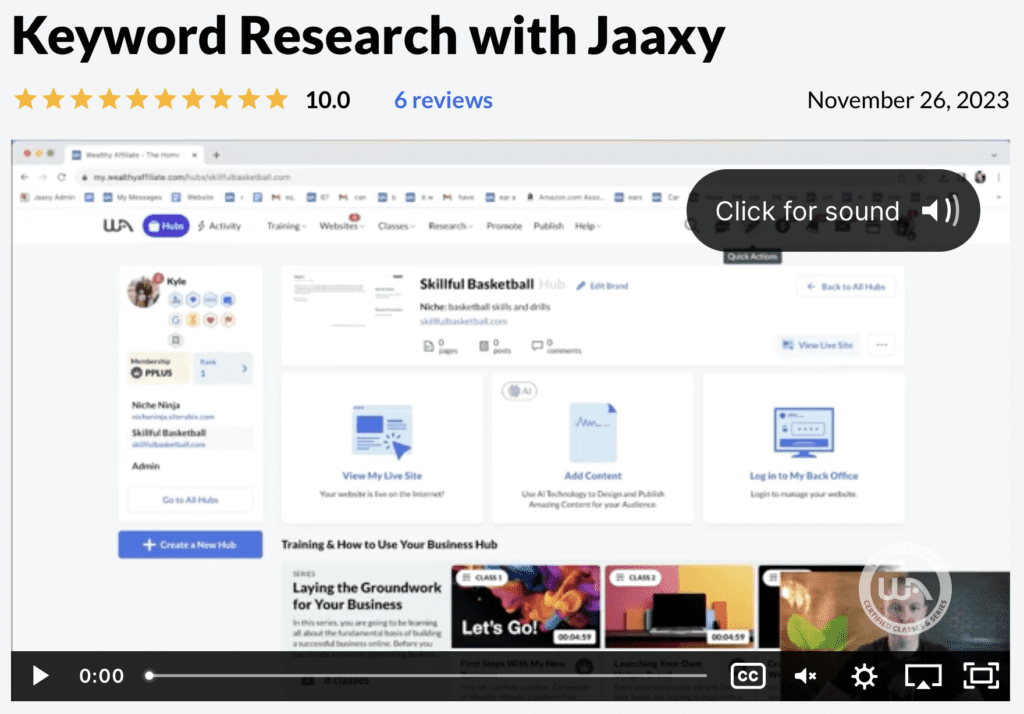
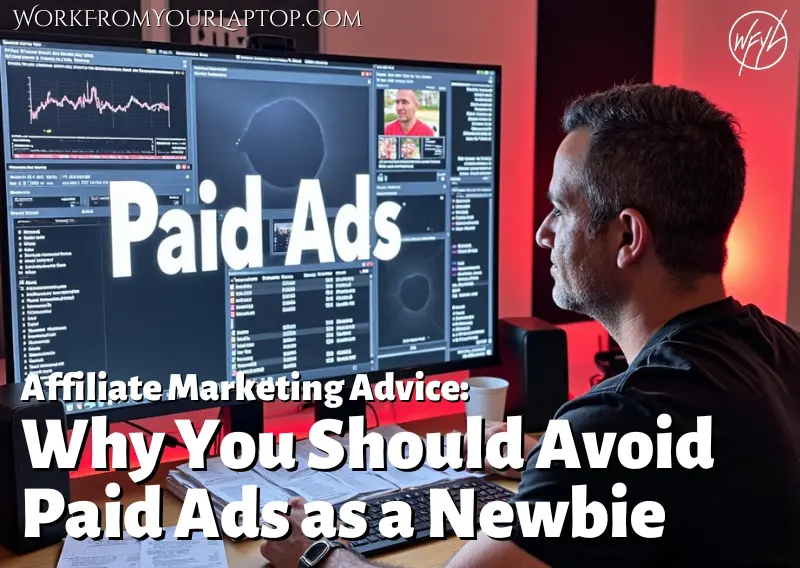
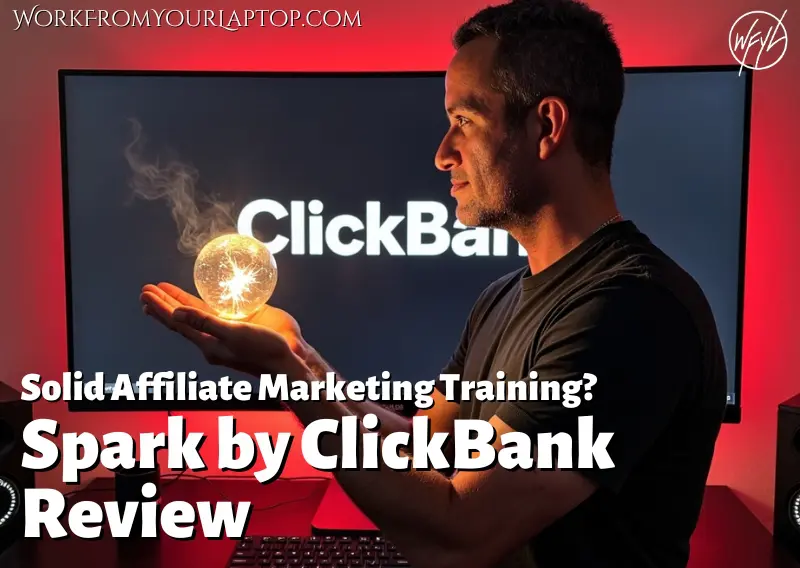
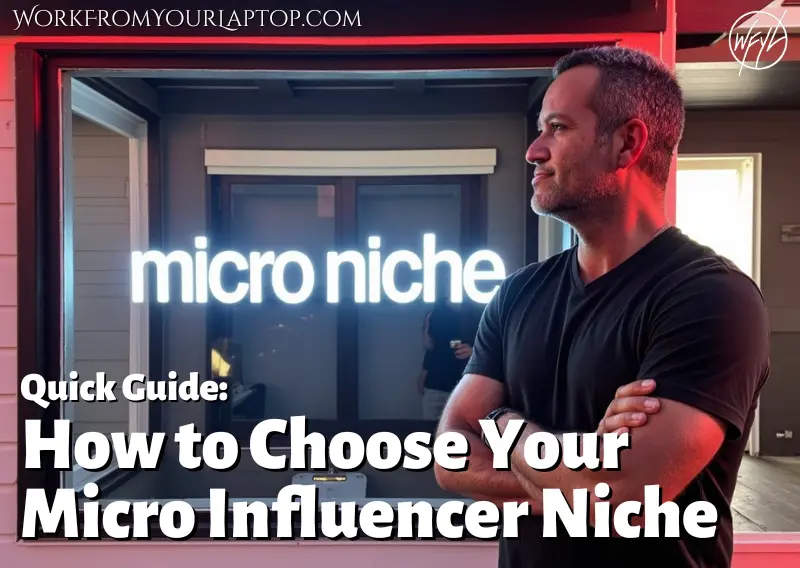


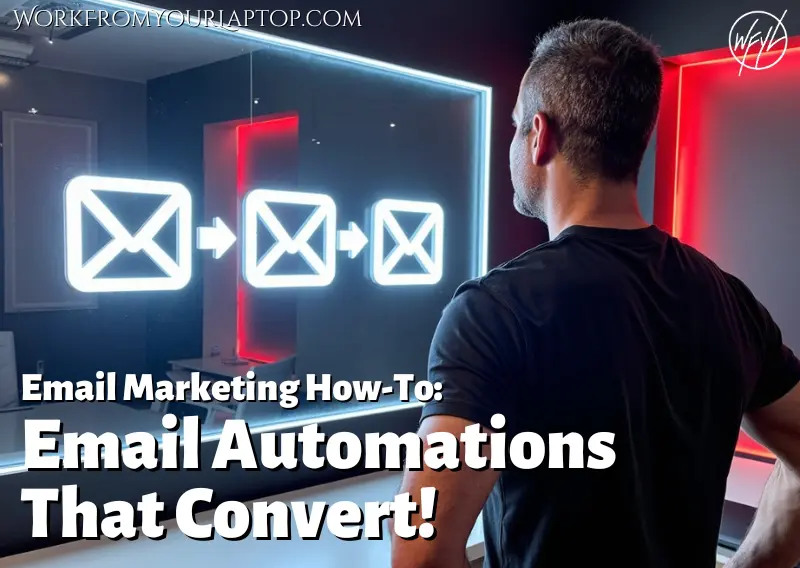
Hi Eric,
I learned a lot form this article and your YouTube videos, one particular video saved me thousands from a program that rhymes with BullQuack marketing. The question I have is if your niche is very specific is it more difficult to write 10 to 15 post per month which was my goal.
thx
Now, thanks to Wealthy Affiliate Hubs feature you’ll have basically unlimited content ideas no matter your niche. It makes it so much easier to map out content and topic clusters to write about. Thanks for the comment!
Eric,
This is all great advice! I sometimes fail to ask my audience questions for them to respond to if they decide to make that leap. I am taking notes and have also bookmarked your page so I can use it for easy reference, like a checklist. Thanks for the great tips, can you give some advice on blending the affiliate link but not camouflaging it out so it is not seen?
Thanks again,
Stacie
No need to camouflage anything. Make your calls to action bold and easy to understand so your audience knows it’s their turn to take action 🙂 Thanks for the comment!
Hello Eric, I really enjoyed this. You made me laugh with that long paragraph, it was a great way to demonstrate how not to write to your audience. The great articles that were linked just drew me into learning more about affiliate marketing. You are a great coach. I want to know how long on average does it take to succeed with a blog? Does it have to be years?
I had success my very first year, but with every business it’s consistency that’s key. Continue to learn, build, and apply what you learn on a daily basis. Thanks for the comment!